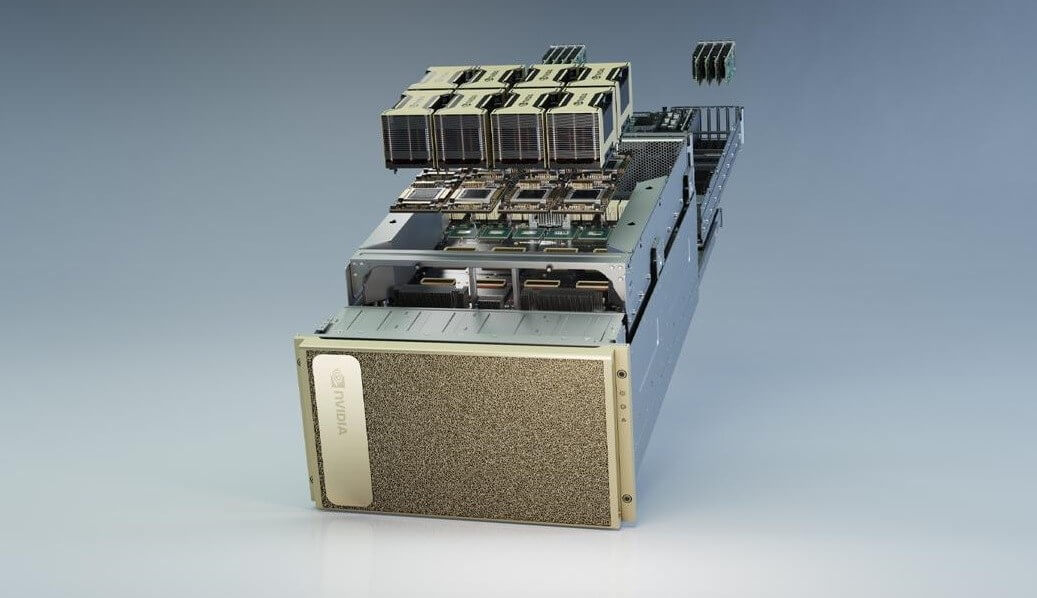In brief: AMD and Nvidia have been tech rivals for a long time, so this might come as a surprise: Team Red has just revealed more specifications of Nvidia’s Ampere-based DGX A100 AI system.

Nvidia revealed its Ampere GPU architecture last month in the form of its A100 GPUs. Based on the 7nm process and designed for cloud computing, AI, and scientific number crunching, it boasts 54 billion transistors, 6,912 CUDA cores, and 20 times the speed of the previous Volta solution.
For the company’s DGX A100 system, eight of the new GPUs -- which no longer use the Tesla name to avoid mix-ups with a certain carmaker -- were paired with two of AMD’s Epyc 7742 processors. Those Zen 2 CPUs, running at up to 3.4 GHz, give the system a total of 128 cores and 256 threads. Because of the partnership, Nvidia has allowed AMD to share further details of the DGX A100 system.
“Only 2nd Gen AMD EPYC processors can provide up to 64 cores and 128 lanes of PCIe 4 interconnectivity in a single x86 data center processor, and we’re excited to see how the power of the Nvidia DGX A100 system enables the I/O bandwidth to be effectively doubled,” said Raghu Nambiar, AMD’s corporate vice president of data center ecosystems and application engineering.

The DGX A100 uses 600 GB/s NVSwitch links to connect the eight A100 GPUs, helping deliver 5 petaflops of power. It also features 320 GB of GPU memory with 12.4 TB per second of bandwidth. The price for all that power? $199,000.
“The Nvidia DGX A100 delivers a tremendous leap in performance and capabilities,” explained Nvidia’s Vice President and General Manager of DGX Systems, Charlie Boyle. “The 2nd Gen AMD Epyc processors used in DGX A100 provide high performance and support for PCIe Gen4. Nvidia has put those features to work to create the world’s most powerful AI system while maintaining compatibility with the GPU-optimized software stack used across the entire DGX family.”
As to why Nvidia chose its rival’s CPUs instead of Intel’s, whose Xeon chips were the preferred processors in the first DGX systems, the company said the extra features and performance offered by Epyc processors made it an easy choice.
"To keep the GPUs in our system supplied with data, we needed a fast CPU with as many cores and PCI lanes as possible. The AMD CPUs we use have 64 cores each, lots of PCI lanes, and support PCIe Gen4,” added Boyle.
https://www.techspot.com/news/85546-amd-reveals-more-details-nvidia-dgx-a100.html